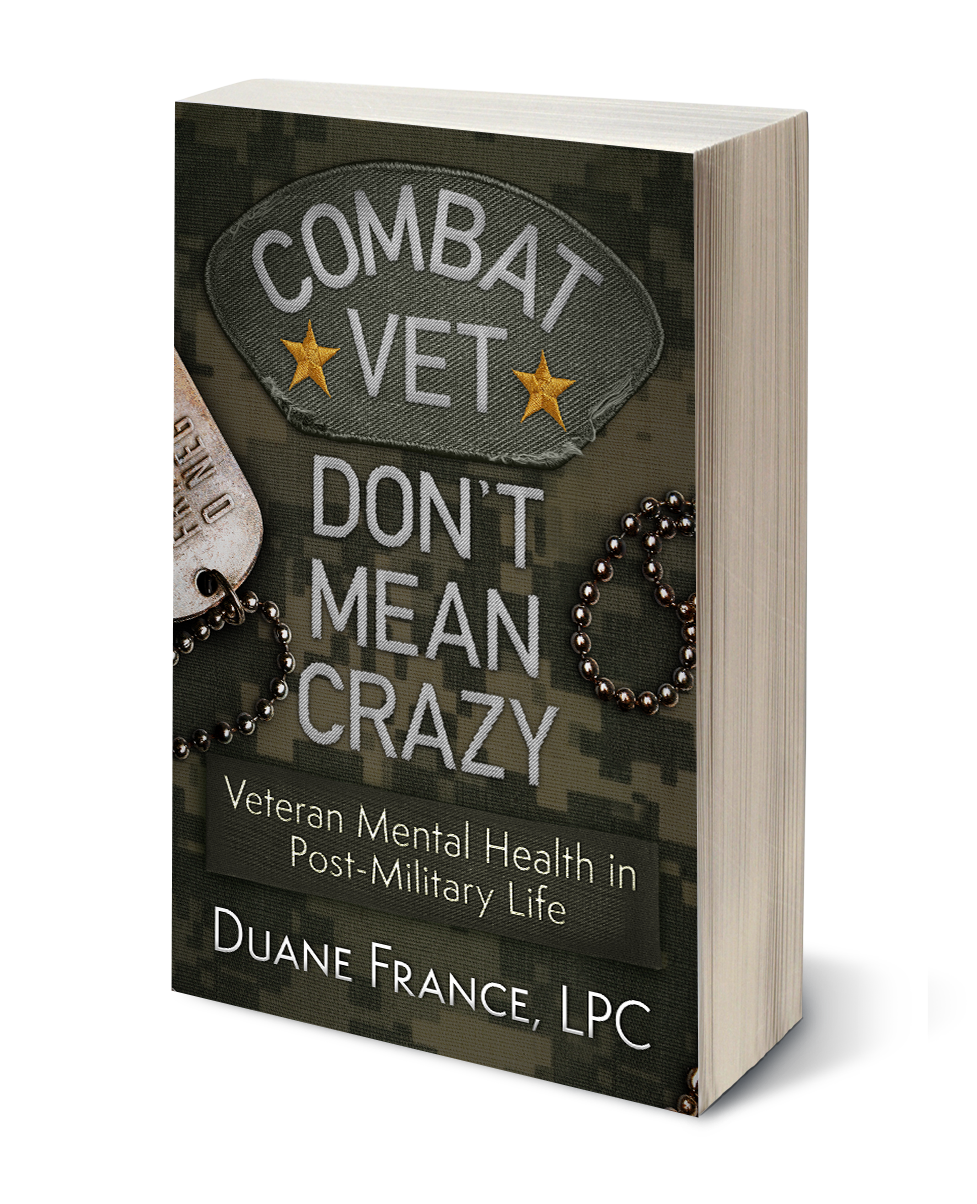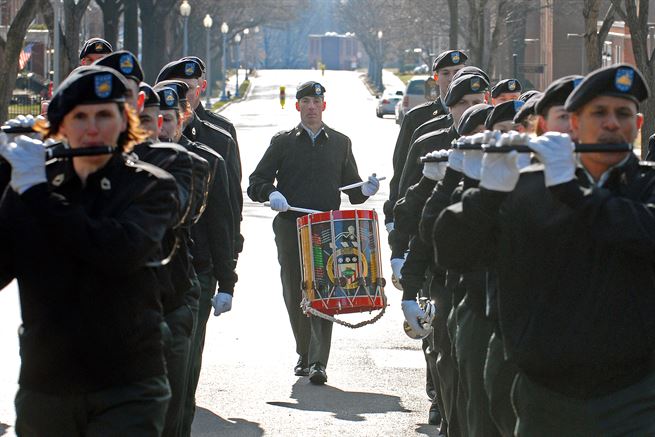
This is the sixth of a series of posts looking at how to impact the veteran suicide epidemic using a public health approach. You can see the original overview post here.
Not all suicide prevention methods are without controversey. Whether they should or shouldn’t be isn’t important; the fact is that lethal means safety is a critical component of suicide prevention, but many misinterpret these steps as gun control. This isn’t about gun rights or gun control; this is about saving lives. On top of that, lethal means safety doesn’t just mean firearms. It addresses how to be safe from any lethal means: overdose from prescription medications, identifying suicide hotspots, for example. Again, these are risk mitigation strategies. The most preferred way to prevent service member, veteran, and military family suicide is to keep from going into crisis in the first place. Once an individual is in crisis, however, it is critical to prepare for a suicidal reaction to that crisis.
Firearms the Most Prevalent and Lethal Means of Veteran Suicide
While lethal means safety is more than just about firearms, we can’t talk about it without discussing firearms. Veterans are more likely to die by suicide using firearms as a method than their civilian counterparts. Here are some of the indisputable facts from he Department of Veterans Affairs 2018 Veteran Suicide Report:
- In 2016, 69.4 percent of Veteran suicides resulted from a firearm injury. In comparison, among, U.S. non-Veteran adults, 48.4 percent of suicides resulted from a firearm injury in 2016.
- 70.6 percent of male veteran suicide deaths in 2016 were as a result of firearms, compared to 53.9% of the non-veteran male population.
- 41.2 percent of female veteran suicide deaths resulted from a firearm injury, compared to 32.4% of non-veteran females.
Potential Reasons for Firearm Lethality
There is a lot of speculation why this is the case. It’s not just because firearm ownership among veterans is more prevalent; A report published by the Department of Health and Human Services in 2018 identify that not all veterans are equally at risk of firearm violence, and broad and injudicious application of firearms restriction are likely to do more harm than good. In other words, “take all guns away from all veterans” is not an effective means of ensuring lethal means safety.
On the other hand, the availability and familiarity with firearms is likely a factor in the increased number. According to Joiner’s Interpersonal Theory of Suicide, the three factors that lead to suicide are a sense of burdensomeness, social alienation, and the acquired ability to enact lethal self injury. While I talk about burdensomeness and isolation in this article, the acquired ability to enact lethal self injury means means that the individual had been exposed to painful and provocative events which lead to fearlessness about death, comfort with bodily harm, and increased pain tolerance. Sure sounds like a military service member to me.
This is a great example of the fact that acquired ability for lethal self-harm does not automatically mean that the veteran is at risk of suicide; if the veteran feels connected to others in their community, and does not feel a sense of burdensomeness, then the fact that they are comfortable with firearms is not a risk factor. As with many of the factors around suicide in general, and veteran suicide in particular, the discussion about firearms is complicated. Just because it’s complicated, however, doesn’t mean that it doesn’t need to be addressed.
Safe Storage Practices
One of the key factors in lethal means safety is how to implement safe storage practices. For veterans, this means both firearms and medication storage. These safe storage practices can be planned for and implemented outside of a suicidal crisis; the simple fact of safe firearms storage leads to a reduction in suicide risk. In this study, those firearm owners who voluntarily engaged in safe storage practices were more likely to understand the risk between firearm availability and suicide, and secure their firearms accordingly.
One particular point that needs to be made here: some think that removing one particular method of lethal means will just cause someone to choose another form of lethal means. A study conducted in 2005 indicates that those who attempt suicide usually have a particular preferred method, and the short-lived nature of the acute suicidal crisis means that the suicidal person will not put their suicidal intention off for later or shift to another means if their preferred method is not available. In other words, if their access to the most lethal and preferred method of suicide is limited, then the risk of death by suicide is significantly limited.
Firearms Storage
There are a couple of ways to ensure restricted access to firearms during a suicidal crisis. There are a number of methods of safe home storage; one of the challenges for many, however, is balancing safe home storage with accessibility. Some of the most common methods of firearms safety in the home are gun locks or safes. Both are able to be secured by personalization technology that is still able to be implemented quickly; a quick search of biometric gun safes returns nearly fifty results on Amazon, with some methods as low as $99. A study as early as 2004 shows that there is a direct correlation between safe home storage and reduction in suicide.
Another potential method of restricting access to firearms as a lethal means of suicide is partnering with local gun shops and ranges to promote and provide safe storage policies. In a study of remote storage practices in eight western states, over 75% of law enforcement agencies or firearms retailers were willing to store guns if there is an adolescent, adult family member, or the owner themself in a psychological crisis. One potential method of increasing awareness about the ability for firearms retailers to support lethal means storage is the Gun Shop Project, an initiative in a number of states that trains and equips firearm retailers in suicide prevention and supports them in helping their patrons restrict access to lethal means in times of crisis.
Medication Storage
Another critical component of safe storage practices is ensuring medication storage for individuals experiencing a suicidal crisis. Medication as a form of lethal self harm results in many fewer suicides than firearms, but they are the leading method of suicide attempt. A research agenda proposal in 2014 looking at reducing access to lethal means identify the number of suicide attempts using prescription medication indicate in the hundreds of thousands annually. Compounding this the fact that some of the most lethal medications that are likely to result in overdose are also some of the most highly addictive, such as opioids and benzodiazepines.
Some of the reduction in access to lethal means can be implemented by service providers, such as using individual blister pacts, which can make it more difficult to put together a lethal dose of medication. Again, the more time that someone has between the suicidal ideation and urge to act upon it, the less likely suicide is going to occur. Lethal means safety for medications can be the same as for firearms; securing the lethal dose of medications in a locked location and only having the required daily dose available will reduce the potential of using medications as a form of lethal means.
This also takes advantage of the research that shows that someone will not likely use another method of lethal means if their intended method is not available. If a service member or veteran intends on using overdose as a method to complete suicide, and the lethal dose of medications is not available to them, then it is unlikely that they will look for another means.
Identify and Minimize Suicide Hotspots
Identifying and minimizing suicide hotspots is another critical component to a community-based approach to lethal means safety. Suicide hotspots are those areas in your community where an individual is more likely to die by suicide, or where a number of deaths by suicide have occurred. This includes structures with significant height, such as tall buildings, bridges, and cliffs; railroad crossings and subway platforms; and isolated locations that will prohibit interruption. The Golden Gate Bridge, for example, is the most lethal location for suicide attempts in the United States. By 2008, over 1,300 remains have been recovered after individuals jumped from the bridge, according to this study. Since remains that are washed out to sea or individuals whose jump was witness but their bodies not found are not counted, it is estimated that the number at that time was closer to 2,000.
In this review of interventions used to reduce access to lethal means, protecting against using suicide hotspots as a method of lethal means typically takes one of four measures. First, restricting access to the location is necessary, by placing physical barriers. Second, placing signs and telephones in these locations, if possible, increases the likelihood that someone contemplating suicide is going to reach out. The picture on the right at the top of this article, for example, is one of a number of signs placed on the Golden Gate Bridge to discourage suicide attempts and encourage help seeking. Third, organizations and communities that have known suicide hotspots can increase the likelihood of intervention by ensuring surveillance and staff training to intervene in possible suicide attempts. Finally, responsible media report of suicide has been found to be effective. By not sensationalizing the locations as “lovers leaps” or “death traps,” responsible reporting by the media can reduce the potential that more individuals will attempt to use the location.
Lethal Means Safety is About Saving Lives, Not Violating Rights
As with many other aspects of suicide prevention, restricting access to lethal means is a sensitive topic. As previously mentioned, having a discussion firearms safety in particular is difficult both politically and personally for many service members, veterans, and their families. This is not a discussion about someone keeping me safe against my will; it’s a discussion about how I can keep me and my family safe. When someone is a suicidal crisis, the one thing that we need the most…clear-headed, rational thinking…is the one thing that we’re least likely to have. Putting protective measures in place before a crisis happens is about saving lives, and everyone’s life is worth saving.
Do you want to help offset some of the costs of the Head Space and Timing Blog and Podcast? Want to show your appreciation and support? You can put some paper in the tip jar by going here or clicking the button below
Want to keep up with all of the Head Space and Timing content? Subscribe Here
 Want to learn more about veteran mental health? Check out the latest Head Space and Timing book
Want to learn more about veteran mental health? Check out the latest Head Space and Timing book
Check out what people are saying about it:
Overall ‘Combat Vet Don’t Mean Crazy’ is a very well written, thought-provoking book. As usual, SFC France did a fantastic job! Being a combat veteran myself who has served in both Iraq and Afghanistan, I feel there’s a lot of powerful information and tools in this book that you can put to use immediately – even as you’re reading this book. Definitely an excellent read on those days of rest and/or distress. – J.C.



1 Comment
Searching for a Solution to Veteran Suicides: A Public Health Approach — Head Space and Timing · May 29, 2019 at 6:54 am
[…] Combating Veteran Suicides: Increase Lethal Means Safety […]
Comments are closed.